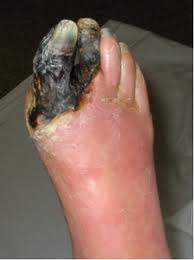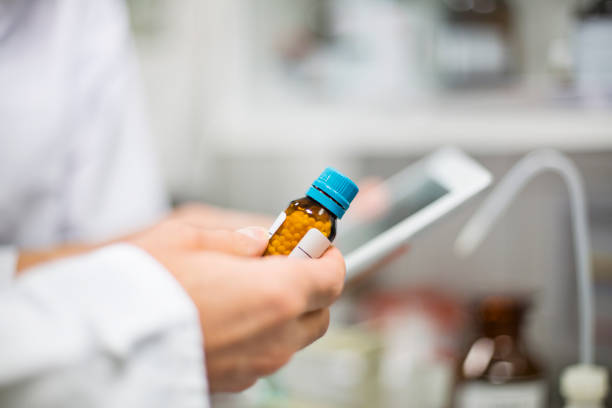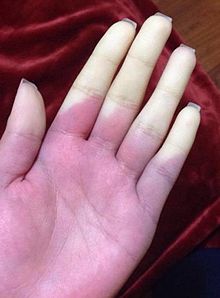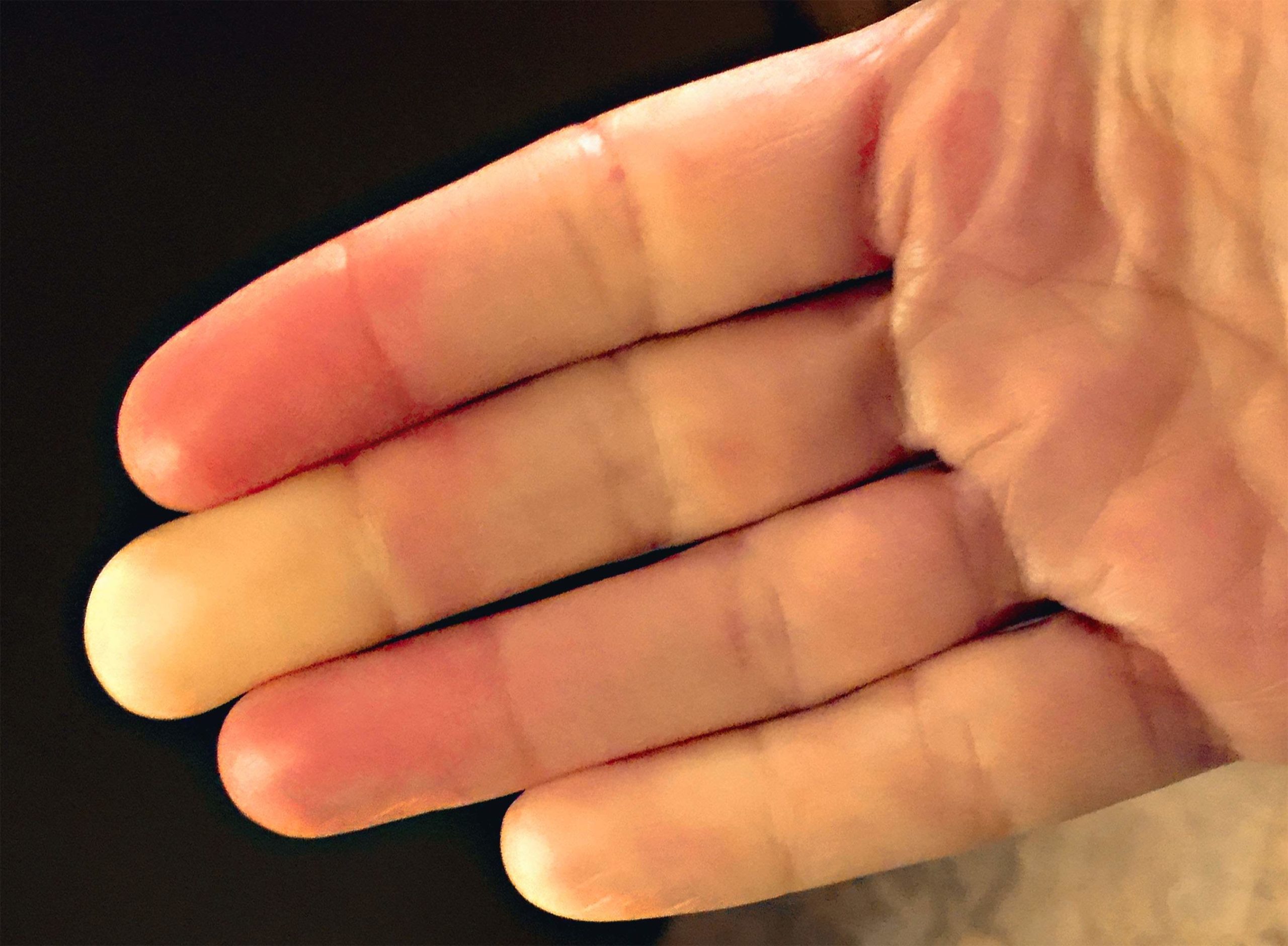Raynaud’s phenomenon occurs because of the spasm of blood vessels, Skin discoloration occurs because an abnormal spasm of the blood vessels causes a diminished blood supply to the local tissues. Skin discoloration occurs because an abnormal spasm of the blood vessels causes diminished blood flow to the local tissues. Initially, the digit(s) involved turning white because of the diminished blood flow. The digit(s) then turn blue (cyanosis) because of a prolonged lack of oxygen. Finally, the blood vessels reopen, causing a local “flushing” phenomenon, which turns the digit(s) red.
Thank you for reading this post, don't forget to subscribe!
The cause of Raynaud’s phenomenon is unknown, although abnormal nerve control of blood-vessel diameter and nerve sensitivity to cold is suspected of being involved. Raynaud’s phenomenon most frequently affects women, especially in the second, third, or fourth decades of life. Raynaud’s phenomenon in children is essentially identical to Raynaud’s phenomenon in adults.
Cause of Raynaud’s Phenomenon
The cause of primary Raynaud’s phenomenon and secondary Raynaud’s phenomenon are unknown. Both abnormal nerve control of the blood-vessel diameter and nerve sensitivity to cold exposure has been suspected as contributing factors.
The characteristic color changes of the digits are in part related to initial blood-vessel narrowing due to the spasm of the tiny muscles in the wall of the vessels, followed by sudden opening (dilation), as described above. The small arteries of the digits can have a microscopic thickness of their inner lining, which also leads to abnormal narrowing of the blood vessels.
What are the risk factors?
Risk factors for Raynaud’s phenomenon include

- Injury from frostbite and vibrating tools.
- Some allopathic drugs like propranolol (Inderal, ergotamine, Bleomycin, antibiotics etc).
- Having rheumatic autoimmune diseases such as scleroderma,
- systemic lupus erythematosus,
- Sjögren’s (Showgrin’s) syndrome,
- mixed connective tissue disease, and
- rheumatoid arthritis.
Conditions have been associated with Raynaud’s phenomenon
Raynaud’s phenomenon has been seen with a number of conditions, including
- Rheumatic autoimmune diseases (scleroderma, rheumatoid arthritis, lupus, and mixed connective tissue disease).
- hormone imbalance (hypothyroidism and carcinoid).
- trauma (frostbite, vibrating tools).
- medications (propranolol [Inderal], estrogens without additional progesterone, bleomycin [Blenoxane] used in cancer treatment, and ergotamine used for headaches).
- Nicotine.
- Rarely with cancers.

Symptoms and signs
Symptoms of RP depend on the severity, frequency, and duration of the blood vessel spasm.
- Most patients with the mild disease only notice skin discoloration upon cold exposure when digits turn white, then blue, and then flash red when the blood vessels reopen.
- They may also experience mild tingling and numbness of the involved digit(s) that will disappear once the color returns to normal.
When the blood-vessel spasms become more sustained, the sensory nerves become irritated by the lack of oxygen and can cause pain in the involved digit(s). Rarely, poor oxygen supply to the tissue can cause the tips of the digits to ulcerate. Ulcerated digits can become infected. With a continued lack of oxygen, gangrene of the digits can occur.
Less common areas of the body that can be affected by Raynaud’s phenomenon include the nose, ears, and tongue. While these areas rarely develop ulcers, they can be associated with a sensation of numbness and pain.
Patients with secondary Raynaud’s phenomenon can also have symptoms related to their underlying diseases.
- Raynaud’s phenomenon is the initial symptom of a majority of patients with scleroderma, skin, and joint disease.
- Other rheumatic diseases frequently associated with Raynaud’s phenomenon include lupus, rheumatoid arthritis, and Sjögren’s syndrome.
Diagnose Raynaud’s phenomenon
There is no any proper diagnosing test for Raynaud’s phenomenon in today’s medical science.
In patients with the characteristic sequence of skin-color changes of the digits upon cold exposure, diagnosing Raynaud’s phenomenon is not difficult. Sometimes, certain patterns in the capillaries adjacent to the fingernails of patients with Raynaud’s phenomenon can be seen using a magnifying glass or camera.
Abnormal nailfold capillary patterns can suggest the possibility of an associated rheumatic condition. Some blood tests (for example, sedimentation rate, rheumatoid factor, antinuclear antibody, thyroid hormone levels, and protein levels) to exclude associated rheumatic diseases and thyroid disorders.
The doctor can also perform certain maneuvers with the patient’s extremities to exclude pinched blood vessels that can produce symptoms that mimic Raynaud’s phenomenon, such as in thoracic outlet syndrome.
Typically, patients with Raynaud’s phenomenon which is a manifestation of a rheumatic disease have elevated blood sedimentation rates and antinuclear antibodies.
Allopathic treatment for Raynaud’s phenomenon
Management of Raynaud’s phenomenon involves preventing the spasm of the blood vessels by protecting the fingers and the toes from cold, trauma, and infection. Medications that can aggravate blood vessel spasms should be avoided by patients with Raynaud’s phenomenon. In patients with persistent symptoms, medications that dilate the blood vessels (angiotensin-receptor blockers and calcium channel blockers [amlodipine, nifedipine, felodipine]) can be administered.
Patients with Raynaud’s phenomenon who have no symptoms other than the color changes of extremities may require only home-remedy measures to prevent complications. Prevention measures are important in primary and secondary Raynaud’s phenomenon regardless of the severity. Simple initial care involves keeping the body warm, especially the extremities.
Gently applied finger splints are used to protect ulcerated areas. Ointments that open the blood vessels (nitroglycerin ointment) are sometimes used on the sides of severely affected digits to allow increased blood supply and healing.
Patients with persistent or bothersome symptoms may be helped by taking oral medications that open (dilate) blood vessels. (Sometimes these medications are decreased or eliminated when the environment is warmer.) These include calcium antagonists (or calcium channel blockers), such as diltiazem, nicardipine, nifedipine, and other medicines used in blood pressure treatment, such as methyldopa and prazosin. Recent research has shown that the blood-pressure drug losartan) can reduce the severity of episodes of Raynaud’s phenomenon.
Medications that thin the blood, such as low doses of aspirin or dipyridamole, are sometimes helpful.
Some patients with persistent symptoms can benefit by adding a medication called pentoxifylline, which makes the red blood cells more pliable and thereby improves circulation.
Severe Raynaud’s phenomenon can lead to gangrene and the loss of digits from a lack of blood supply. With severe disease, nerve surgery called “sympathectomy” is sometimes considered. In this procedure, to prevent blood-vessel spasm, the nerves that stimulate the constriction of the vessels (sympathetic nerves) are surgically interrupted. Usually, this is performed during an operation that is localized to the sides of the base of the fingers at the hand. Through small incisions, the tiny nerves around the blood vessels are stripped away. This procedure is referred to as “digital sympathectomy”.
Prognosis with allopathic treatment
The outlook for those affected by Raynaud’s phenomenon depends on its severity and whether or not there is an associated underlying medical illness. Most people affected by Raynaud’s phenomenon do very well in response to simple measures, with or without medications.
Allopathic treatment is just to avoid pain and other symptomes not curing the disease and the root cause of disease. Patient have to take these drug for all of his/her life and should be carefull with the diet and routine life.
Homeopathic Treatment for Raynaud’s phenomenon
The following are the most trusted and prescribed homeopathic medicines for Raynaud’s phenomenon:
1. Crataegus Oxy
Crataegus oxy is effective for Raynaud’s phenomenon, Blue toe syndrome and arteriosclerosis symptoms, like shortness of breath, exhaustion, weakness, and angina pectoris. Cardiac dropsy. Fatty degeneration. Aortic disease. Extreme dyspnoea on least exertion, without much increase of pulse.
Pain in affected parts/organ, muscles seem flabby, worn out, muscles dilated, Pulse accelerated, irregular, feeble, intermittent, angina pectoris.
Cutaneous chilliness, blueness of fingers and toes; all aggravated by exertion or excitement.
2. Aurum iodatum
Chronic pericarditis, valvular diseases, arteriosclerosis ozaena, Raynaud’s phenomenon, lupus, osteitis, ovarian cysts, myomata uteri, are pathological lesions.
Senile paresis, heart inflammation. The person may feel cheerful, but also anxious and hurried. Symptoms worsen with warmth and exertion.
3. Aurum Metalicum
Aurum Metalicum is used for arteriosclerosis, hypertension, Raynaud’s phenomenon, and an enlarged and weakened heart, along with nightly pains. The patient is also depressed and suicidal, and yet fears death. Common emotional feelings include loss, failure, grief, and self-blame.
Sensation as if there is something creeping inside the affected organ, immediately followed by a tumultuous rebound, with sinking at the epigastrium. Palpitation. Pulse rapid, feeble, irregular. Hypertrophy.
High Blood Pressure-Valvular lesions of arterio-sclerotic nature.
4. Baryta muriatica
Think about using baryta muriatica for blue toy syndrome, Raynaud’s phenomenon and arteriosclerosis when there is an irregular and rapid pulse, exhaustion, shortness of breath, dizziness, and mental weakness.
The patient easily angers, symptoms worsen while sleeping and during springtime, Arterio-sclerosis and cerebral affections, Hypertension and vascular degeneration, Icy coldness of affected organ, with paralysis. Multiple sclerosis of brain and cord. Voluntary muscular power gone but perfectly sensible.
5. Natrum iodatum
Natrum iodatum is typically used for chest pain, Raynaud’s phenomenon, heart inflammation, arteriosclerosis and Blue toy syndrome when there is also shortness of breath, dizziness, chronic bronchitis, chronic hay fever, and rheumatism.
6. Plumbum
Plumbum is useful for Delirium, coma and convulsions, hypertension, Raynaud’s phenomenon, Blue toy syndrome and arteriosclerosis, pressure in the affected organ produces shooting pains, multiple sclerosis, Cardiac weakness, pulse soft and small, dichroite.
Wiry pulse, camp-like constriction of peripheral arteries, trembling, palpitations, abdominal cramps, constipation, paranoia, dementia, and chronic kidney disease.
Symptoms worsen at night and while someone is present.
7. Strontium Carbonicum
Strontium carbonicum is useful when Raynaud’s phenomenon, Blue toy syndrome and/or arteriosclerosis, along with headaches, nausea, weakness, and vertigo. The patient will also feel flushed, and their heart feels smothered. Heat improves symptoms, while things worsen from walking, especially at night.
8. Vanadium
Vanadium is used for Raynaud’s phenomenon, Blue toy syndrome and arteriosclerosis when there is a pressure in the affected organ, and that organ feels grasped and compressed, as if it is too full of blood. Its action is that of an oxygen carrier and a catalyzer.
Fatty degeneration of the liver, heart, and arteries, arteriosclerosis is often the result from arthritis, diabetes, or tuberculosis, porre (faeity and bakery) diet.
9. Digitalis
Digitalis symptoms are: slow pulse but primarily strong; great weakness of the cardiac and other organs tissue.
Extra exertion increases its rapidity, but diminishes its force, so that the quick pulse becomes irregular and intermittent (marked symptom). The affected organ feels as if the blood stood still.
Weakness and numbness of the affected organ, and often cyanosis. The patient fears that the heart will stop beating if he should make any motion.
The Digitalis patient has sick feeling at the stomach after eating, disturbed sleep, apprehensiveness, deep sighing, slow respiration, dry cough, suffocative spells; in fact, dropsical conditions dependent on heart trouble, swelling of feet and ankles, anasarca, cardiac dropsy associated with slow pulse, urine suppressed or scanty.
The speciality of Digitalis is inflammation of the muscles especially heart muscle approaching insidiously and in sudden cases of myo-or endocarditis with the symptoms above outlined.
The first noticeable benefit is a steadier heart’s action and an increased flow of urine.
10. Cactus grandiflorus
Its well known characteristic symptom, “Sensation as if the affected organ(s) were grasped with an iron hand,” which clutches and relaxes alternately, is ever present to the mind.
It should be borne in mind that not all patients express themselves alike. A squeezed sensation may mean the same symptom. It has, however, other symptoms.
Cordites and pericarditis, Cyanosis and Gangrene may call for Cactus. It presents a better picture of rheumatic carditis than any other remedy. It seems to lie midway between Aconite and Digitalis.
It controls the inflammatory condition and strengthens the arterial muscle and heart’s contractions, and does not poison the affected organ and heart like Digitalis or Strophanthus.
There is great irritation of the nerves and Cactus may be found to be the remedy for. Hypertrophy of the heart especially in young patients, intense palpitation and fluttering sensations about the heart.
Difficult breathing, suffocative, fainting, violent palpitation and inability to lie down are symptoms indicating the cardiac asthma or dyspnoea.
11. Kalmia latifolia
Kalmia is a remedy for toe, wrist and cardiac hypertrophy, especially after rheumatism, and has the symptom so common in Raynaud’s phenomenon and heart affections, namely , “numbness of the arm.” There is with Kalmia much pain and anguish about the affected organ, some dyspnoea, palpitation, and pressure from the epigastrium towards the heart.
The heart is irregular and intermits every third or fourth beat. There are shooting pains through the affected extremity.
Kalmia is an excellent remedy for circulatory troubles when they have been caused by the suppression of rheumatism by external applications.
The pulse of Kalmia is slow, but not as slow as Digitalis. Their symptomatic value consists in pointing to a class of drugs rather than to an individual drug.
The minutiae of the pains should be studied. Acute circulatory disease depending upon rheumatism will call for Kalmia; the sharp pains taking away the breath will call attention to it.
Hering says Kalmia has a most beneficial action in diminishing too rapid pulsation of the heart.
12.Spigelia
Spigelia is the remedy for the painful affections of the toe, arm and the heart. It stands at the head of the list for acute myocarditis, pericarditis and capillary blood circulation.
There are sharp shooting pains, radiating pains, over the whole arm or leg.
There is palpitation worse from any movement of the arm or body, purring sensation felt over the region when placing the hand thereon. The pulse is intermittent, not synchronous with the heart beat, and the slightest motion of the arm or hands makes the patient worse.
All symptoms accompanying neuralgia call for Spigelia. Irregular and tumultuous action of the heart are well met by Spigelia. At times the heart beat is even audible.
Rheumatic endocarditis, Raynaud’s phenomenon and Blue toy syndrome will often find its curative remedy in Spigelia, and it has a most beneficial action in angina pectoris. In cardiac inflammation it comes in after Aconite.
It corresponds well to chronic affections of the heart, particularly valvular disease and hypertrophy.
13. Cimicifuga
This is a homeopathic medicines for Raynaud’s phenomenon, Blue toy syndrome and heart disease often indicated in heart troubles,especially when they supervene upon chorea or rheumatism of the bellies of the muscles.
The headache confined to the forehead or as if the top of the head would fly off is present and an indicating feature.
Pain down the arm or leg. The pains is apt to come in shocks. Insomnia is persistent.
14. Aconitum Napellus
Among the homeopathic medicines for ischemia, arteriosclerosis and heart disease having a marked influence capillary circulation is Aconite. It has numbness of the arm and/or toe, tingling in the fingers, associated with heart disease.
Aconite treats cardiac congestion, blood clots, anxiety, oppression and palpitation, worse when walking ; lancinating stitches occur, and also attacks of intense pain.
It is the remedy in uncomplicated hypertrophy of the affected organ; In Raynaud’s phenomenon, pericarditis and endocarditis when the inflammation sets in with fever with the intense mental anxiety so characteristic of this medicine.
15. Rhus toxicodendron
Rheumatic hypertrophy calls for Rhus. It is a palpitation of the affected organ and heart from over-exertion, with numbness and lameness of the arm or toe and shoulder.
Pericarditis or endocarditis from exposure to rain, getting wet, etc. These symptoms are worse on every change of the weather.
Uncomplicated hypertrophy of the heart such as comes in athletes, machinists, etc., calls for Rhus; and among other remedies for this condition may be mentioned Arnica and Bromine.
Poor blood circulation. poor capillary circulation, pericarditis due to septic condition, and in heart troubles, as in all others, it follows Bryonia well.
16. Bryonia Alba
In affections of circulatory system – Bryonia is one of the most prominent remedies. It corresponds to the first or second stage of arteriosclerosis, Raynaud’s phenomenon, Blue toe syndrome and pericarditis when of rheumatic organ and especially if pleuritic symptoms be present.
There are intense fever, frontal or occipital headache, and acute stitching pains which are aggravated by movement, and the friction murmur is always present.
It does not usually corresponds to pericarditis from Bright’s disease or pyaemia. Asclepias tuberosa is similar to Bryonia, but the symptoms are not so acute, the fever is not intense, the pain is pricking; there is a dry spasmodic cough and the pain is relieved by bending the body or affected organ forward or downward.
A valuable group of symptoms calling for Bryonia is the following : Cramp in affected organ aggravated by walking, raising one’s self or using the slightest exertion, even raising the arm.
17. Convallaria
It is useful in valvular diseases of Blue toe syndrome, Raynaud’s phenomenon and the heart with scanty urine, dropsy and great dyspnoea. It has so relieved the oedema in a number of cases that the patient could lie down. Dyspnoea, palpitation and oedema due to mitral disease, feeble heart sound, anaemic murmurs over the jugular vein, pain in affected organ or extremity, an uneasy fluttering; a sensation when exercising as if the heart stopped beating and then started up again, causing a faint, sick feeling.
18. Lachesis
The snake poisons exercise as a marked effect the overall blood circulation, as well as on the blood itself. Lachesis controles and treat the root cause of the heart palpitation and a constrictive feeling in the cardiac region as well as in extremities.
There is a smothering sensation in muscles, waking the patient out of sleep. Patient can’t bear any pressure on the chest and on the affected organ. Pulse small and weak. It has more septic elements than the other venoms.
The pulse in affected toe/arm is slow, the patient is melancholic and all the symptoms are worse from stimulants and better walking or riding in the open air. It is a remedy that should not be overlooked.
Hypotension is marked. It has much pain and resembles herein Spigelia, but it comes in later in valvular affections. Lachesis has also the symptom that the affected organ feels too large and/or heavy.
Atheromatous conditions of the heart and blood vessels call for Lachesis,especially in old people when symptoms of dropsy are present.
19. Lilium tigrinum
Lilium tigrinum has a pain in the affected extremity as if grasped in a vise, which awakens the patient suddenly. There is much fluttering about the affected organ, and faintness.
Sensation as if the arm/toe were grasped and then released. Lilium will be found useful in purely functional affections, independent of organic lesion.
There is much cardiac and systematic irritability by lying on the left side. Motion aggravates. Lilium is useful in conditions of nervous palpitation, and in functional vascular disorders in women with uterine disease.
20. Arsenicum Album
Like Lachesis, Arsenicum Album is more adapted to later stages of vascular trouble, when the course is downwards.
Arsenicum Album controles and treat great irregularity of the heart and other cylindrical shaped organ(s), or the pulse may be quick and weak. It is especially useful in pericarditis or endocarditis after suppression of measles or scarlatina.
A grand remedy in cardiovascular disease depending upon constitutional causes like sepsis, gangrene, poor blood circulation, fatty degeneration of the blood vessels.
Restlessness will be present, and oedema, puffiness of the eyes and swelling of the extremities. Great dyspnoea, attacks of suffocations at night on lying down and particularly after midnight.
Phosphorus affects rather the right side producing a venous stagnation, and it is exceedingly useful in fatty degeneration in an organ. Arsenicum rather affects the left side, has more oppression of the chest in breathing, more orthopnoea and more anasarca. The patient cannot lie down or go upstairs.
21. Collinsonia
In functional disorders of the cardiovascular system, Collinsonia is an excellent remedy, especially when they are reflex from haemorrhoidal troubles or alternate with them. It has been found useful where there is much cardiac irritability, traceable to suppressed haemorrhoidal bleeding, the cardiac nerves seem irritated, and there is great sensitiveness in extremities and about the heart , fullness and oppression, difficulty in breathing and faintness, poor capillary blood circulation.
It cured for the writer a case of severe constrictive pain about the heart in a man who habitually passed blood with this stools; upon the disappearance of the blood from the stools the heart symptoms commenced and when the flow of blood became re-established the heart symptoms disappeared.
Collinsonia entirely cured both conditions. A characterizing indications is a persistent, rapid, but weak pulse; the action is excessive, but the force is deficient.
Collinsonia acts on the heart by removing obstruction or irritations in the liver, portal system, or kidneys, and by increasing muscular tonicity.
22. Strychnia
This is a pure and simple heart stimulant. It’s only legitimate field is when paralysis threatens and during the course of any affection, you have dyspnoea, blueness of the fingertips and lips, sour eructations and symptoms of disturbed digestion. Here 1/64 of a grain hypodermically may bridge the chasm.
23. Apis Melifisteda
Edematous. Synovitis. Felon in beginning. Knee, wrist, paedals swollen, shiny, sensitive, sore, with stinging pain. Feet swollen and stiff. Tired, bruised feeling. Numbness of hands, tips of fingers. Hives with intolerable itching. Edematous swellings. Swellings after bites; sore, sensitive. Stinging. Erysipelas, with sensitiveness and swelling, rosy hue. Carbuncles, with burning, stinging pain. Sudden puffing up of whole body.
24. Carbo Vegetabilis
Heavy, stiff; feel paralyzed; limbs, go to sleep; want of muscular energy; joints weak. Pain in hand, shins, fingers. Cramp, numb and sweaty extremities. Cold in extremities. Toes red, swollen. Burning pain in bones and limbs. Blue, cold ecchymosed. Marbled with venous over distension. Itching; worse on evening, when warm in bed. Moist skin; hot perspiration; senile gangrene; bed sores; bleed easily. Falling out of hair, from a general weakened condition. Indolent ulcers, burning pain. Ichorous, offensive discharge; tendency to gangrene of the margins. Purpura. Varicose ulcers, carbuncles.
25. Anthracinum
Haemorrhages, black, thick, tar-like, rapidly decomposing, from any orifice. Glands swollen, cellular tissues oedematous and indurated. Septicaemia. Ulceration, sloughing and intolerable burning. Erysipelas. Black and blue blisters. Dissecting wounds. Insect stings. Bad effects from inhaling foul odors. Gangrenous parotitis. Succession of boils. Gangrene. Foul secretions.
Prognosis for Raynaud’s phenomenon with Homeopathic treatment
In Homeopathic treatment, the outlook for those affected by Raynaud’s phenomenon does’t depends on its severity and whether or not there is an associated underlying medical illness. Most patients affected by Raynaud’s phenomenon do very well in response to simple treatment.
Homeopathic treatment is not just to avoid pain and other symptoms, but to treat the disease and it’s cause(s) once and for ever, treatment duration is 40-60 days depends on severity and other illnesses. No need for lifelong medication and/or lifelong dietary regimes.
P. S : This article is only for doctors having good knowledge about Homeopathy and allopathy, for learning purpose(s).
For proper consultation and treatment, please visit our clinic.
Location, address and contact numbers are given below.
NoN of above mentioned medicine(s) is/are not the full/complete treatment, but just hints for treatment; every patient has his own constitutional medicine along with these mentioned above.
To book an appointment or order medicine by courier, please send your details at WhatsApp– +923119884588
 Dr. Sayyad Qaisar Ahmed (MD {Ukraine}, DHMS) ; senior research officer Dnepropetrovsk state medical academy Ukraine; is a leading Homeopathic physician practicing in Al-Haytham clinic, Umer Farooq Chowk Risalpur Sadder (0923631023, 03119884588), K.P.K, Pakistan.
Dr. Sayyad Qaisar Ahmed (MD {Ukraine}, DHMS) ; senior research officer Dnepropetrovsk state medical academy Ukraine; is a leading Homeopathic physician practicing in Al-Haytham clinic, Umer Farooq Chowk Risalpur Sadder (0923631023, 03119884588), K.P.K, Pakistan.
Find more about Dr. Sayyad Qaisar Ahmed at :
https://www.youtube.com/Dr Qaisar Ahmed
